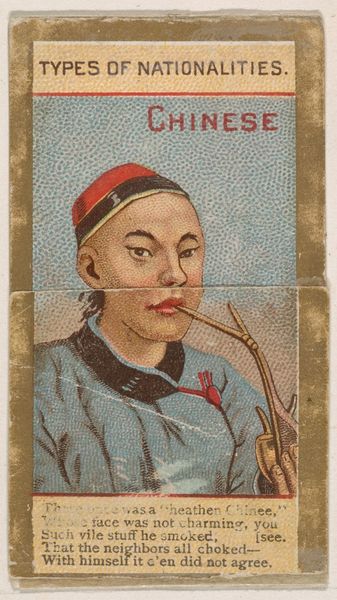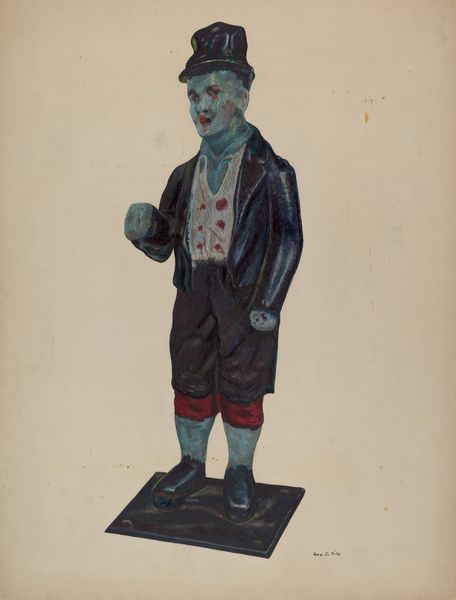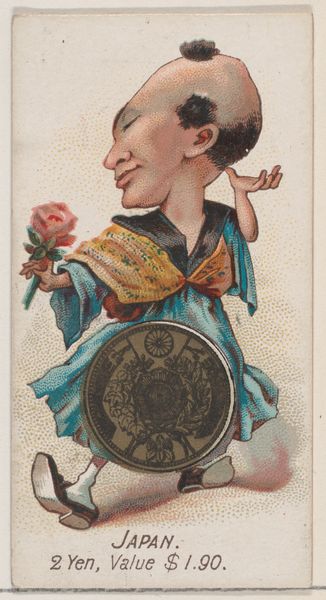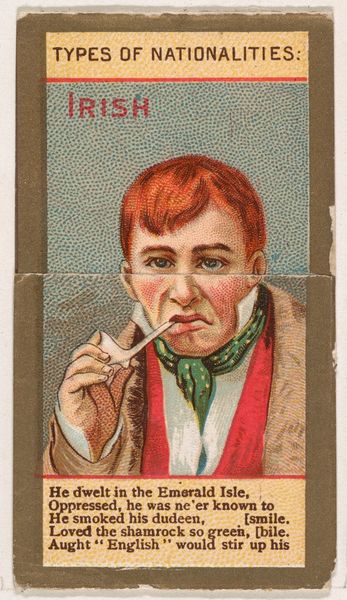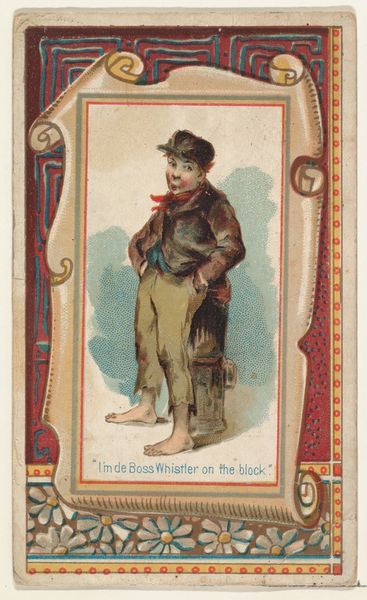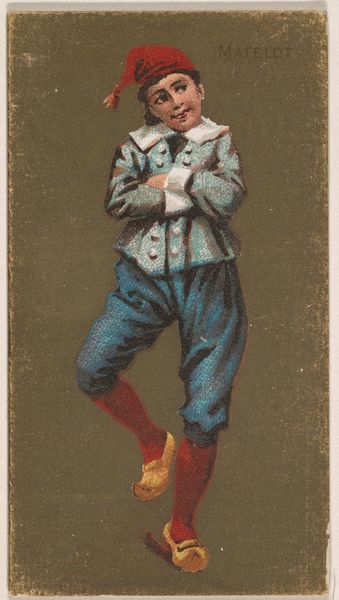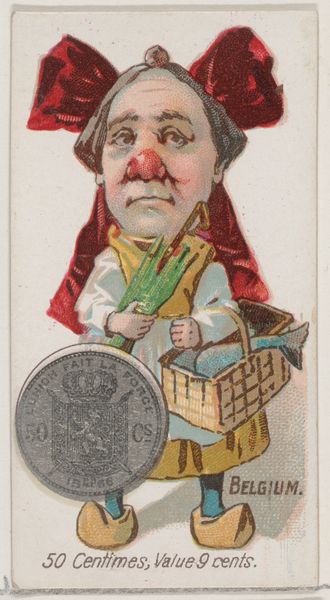
Peru, 1 Dinero, from the series Coins of All Nations (N72, variation 2) for Duke brand cigarettes 1889
0:00
0:00
drawing, print
#
portrait
#
drawing
# print
#
figuration
#
coloured pencil
#
men
#
portrait drawing
#
watercolour illustration
#
coin
#
portrait art
#
miniature
Dimensions: Sheet: 2 3/4 x 1 1/2 in. (7 x 3.8 cm)
Copyright: Public Domain
Editor: Here we have "Peru, 1 Dinero" from the series "Coins of All Nations," made around 1889 for Duke brand cigarettes. I’m struck by the caricature style, and how the figure almost seems imposed on top of the coin. What compositional elements do you find most compelling here? Curator: The immediate tension arises from the superimposition of figuration against numismatic representation. The portrait, itself a form of currency given its role in depicting status and power, competes with the literal currency, disrupting a clean semiotic reading. Do you perceive a hierarchy in their placement? Editor: Well, the figure is larger and more colorful. The eye is naturally drawn to him before the coin, which is in grayscale and slightly obscured. Curator: Precisely. Consider also the framing: The rigid edges of the card contain this contrasting imagery. Note the flat planes of color – the pale pink background versus the harsher blues and reds of the figure's clothing. How does that play with the perspectival flattening overall? Editor: It definitely draws attention to the artificiality of the image. The lack of depth almost turns it into a collage. It seems that the Duke company was really interested in grabbing one's attention in this era. Curator: Indeed. And notice how the very flatness emphasizes the *objectness* of the card. The composition therefore calls attention to itself as a constructed, material object. We move away from notions of deep, illusionistic space, and instead acknowledge the pure, surface qualities. Editor: I never thought of it that way, but seeing how all of these different parts add up makes it way more impactful! I was hyper-focused on the man's cartoonish face, but now I can clearly observe what's going on with the overall pictorial balance, between flat color fields and representational image-making.
Comments
No comments
Be the first to comment and join the conversation on the ultimate creative platform.



